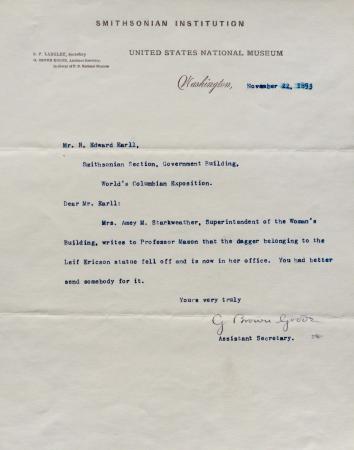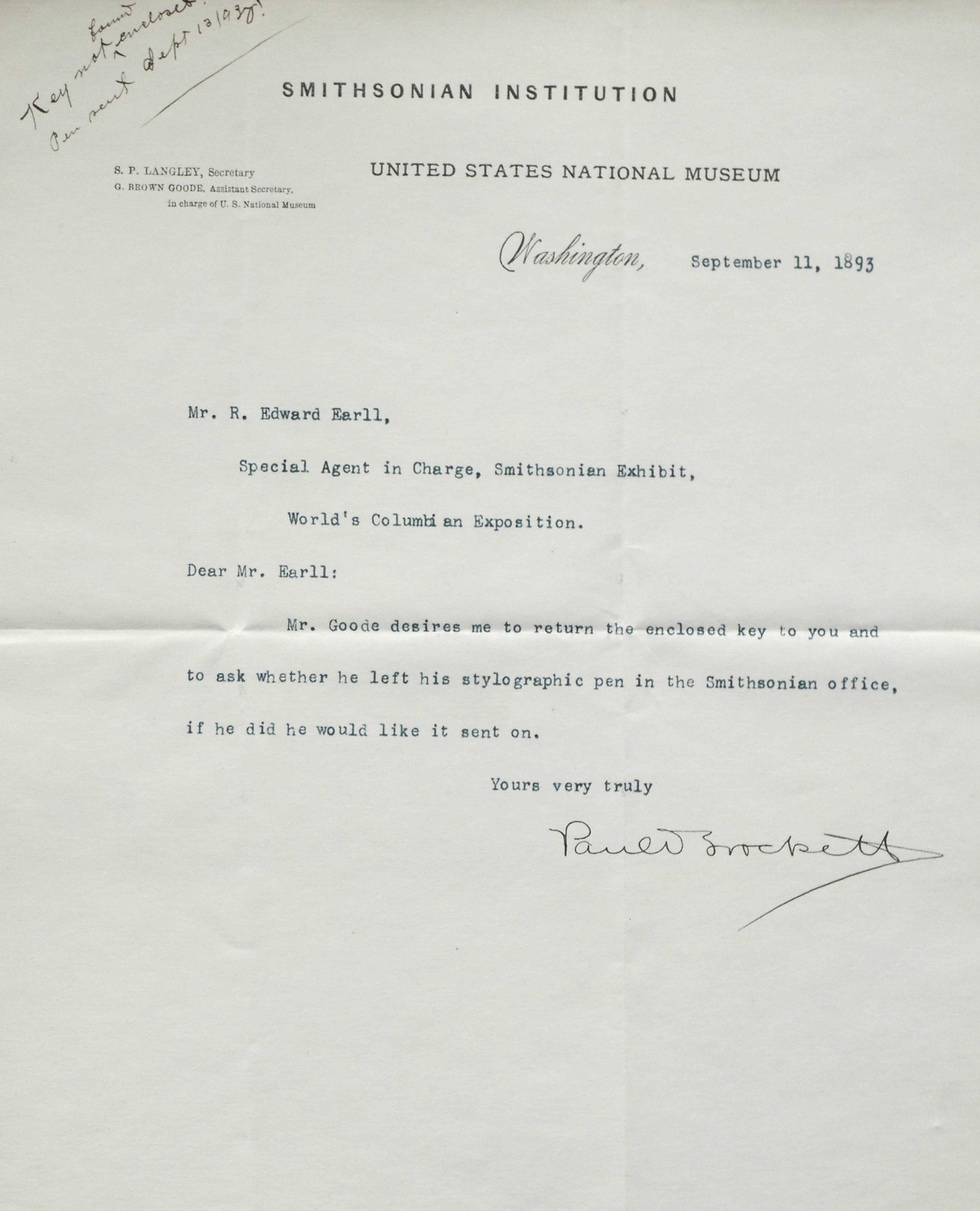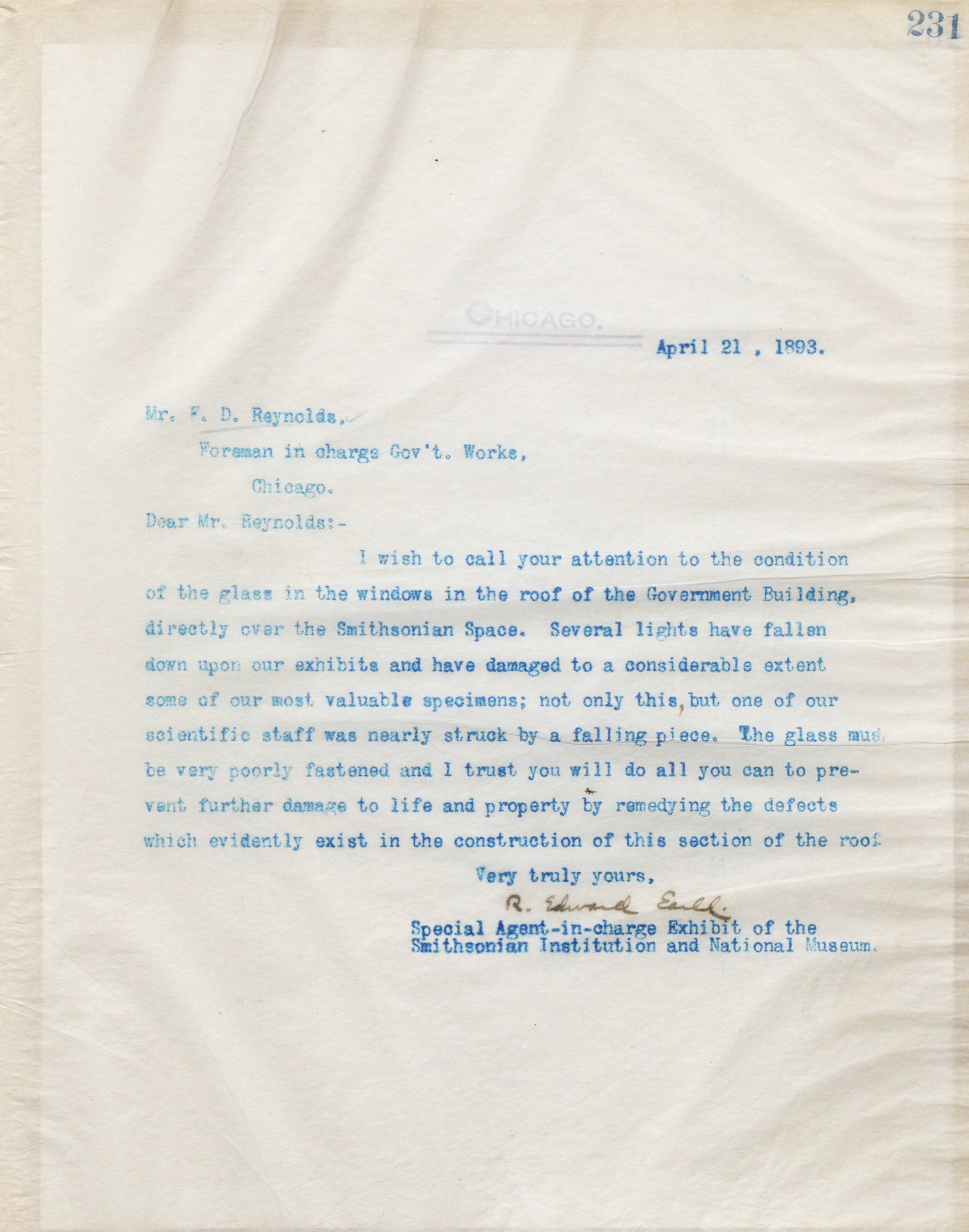Digitization of archival materials is an extensive process, as previous posts on this blog have revealed. As a digital services intern here at the Archives, I’ve contributed to part of that process with my work on a collection of exposition records, and I’ve come across some fun tales of museum misadventures along the way.
Record Unit 70, the Exposition Records of the Smithsonian Institution and the United States National Museum, 1867-1940, is a collection of documents that cover the Smithsonian Institution’s involvement in the world’s fairs and expositions of the late 19th and early 20th centuries, from the Centennial Exposition of 1876 in Philadelphia to the New York World’s Fair of 1939. The materials include everything from payroll documents and shipping records to correspondence and exhibit catalogues, all of which provide detailed illustrations of the work that went into creating the Institution’s exhibits at these expositions. This collection has recently been scanned to create digital surrogates that will eventually be available on the Archives website, but there’s a few important steps that need to be completed first. That’s where I come in!
My work this fall focused on two essential tasks—metadata standardization and image quality assurance. The first task involved combing through a massive spreadsheet to ensure that the metadata, or data describing the images’ contents, for the scanned images corresponded with the Archives’ standards. I ensured that the correct identification numbers, titles, and more had been assigned to the images. The second task was a little more exciting, because I engaged directly with the content of the collection. Image quality assurance for this project meant going through the scanned images one-by-one, taking inventory to make sure that no images were missing and checking each for issues like shadows or excessive cropping. This is the longer part of the process, but it also gave me the opportunity to get up close and personal with the unique stories in the collection.
I worked primarily with the records specific to the World’s Columbian Exposition of 1892–1894 in Chicago, and, as with any large project, it had its fair share of hiccups along the way. Here are some of my favorite stories of things that didn’t quite go as planned.
During the World’s Columbian Exposition, Smithsonian Assistant Secretary George Brown Goode, who was in charge of the United States National Museum, frequently traveled between Washington and Chicago as the Institution’s exhibits were prepared and installed. On one such trip in September 1893, he left his favorite stylographic pen in his office in Chicago. Evidently, he was quite anxious to retrieve it according to several letters sent to R. Edward Earll, the Institution’s special agent in charge of the Exposition.
Later that year, Goode charged Earll with retrieving yet another missing item. This time, the dagger part of the Leif Erikson statue in the Exposition’s Women’s Building had fallen off, and Earll was responsible for rescuing it from the superintendent’s office, as the statue was on loan from the U.S. National Museum, meaning that it was the Institution’s duty to repair it.

And of course, there were plenty of obstacles in the initial installation of the Institution’s exhibits, much to Earll’s continued chagrin. Just one month before the Exposition was due to open to the public in May 1893, the skylights of the U.S. Government Building had fallen in, damaging several displays and nearly injuring a scientist. Torrential spring rains further delayed installation, as water poured through the recent hole in the roof, resulting in several angry letters from Earll to the foreman in charge of the building’s construction.
Despite these hiccups, the Smithsonian Institution managed to pull off a successful display at the World’s Columbian Exposition, and it would go on to create many more displays at similar expositions. It’s been a delight to explore these materials during my time at the Archives, and I can’t wait for everyone to get that same opportunity once they are available online.
Related Resources
- “What Our Experts Want You to Know About Digitization,” by Emily Niekrasz, The Bigger Picture, Smithsonian Institution Archives
- Exposition Records of the Smithsonian Institution and the United States National Museum, 1867-1940, Record Unit 70, Smithsonian Institution Archives
Produced by the Smithsonian Institution Archives. For copyright questions, please see the Terms of Use.





Leave a Comment